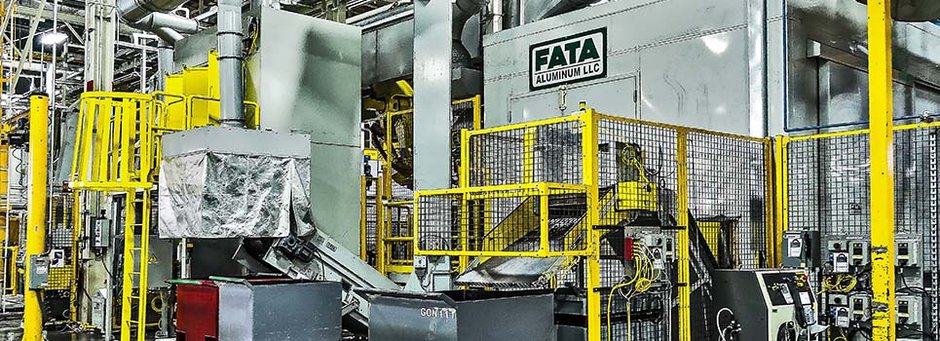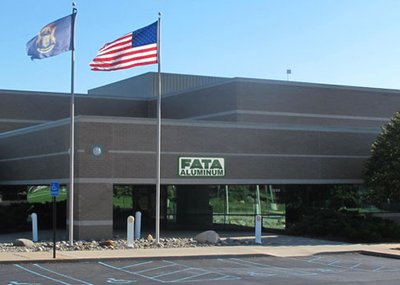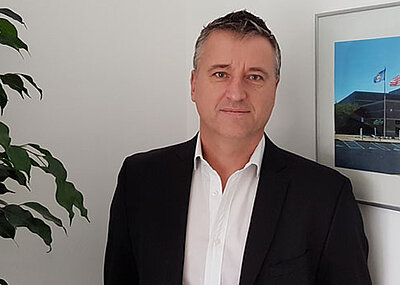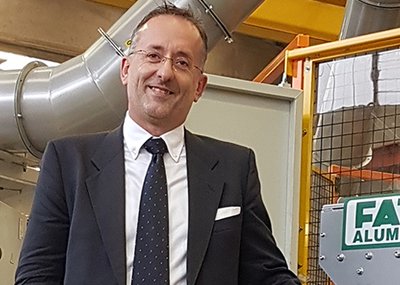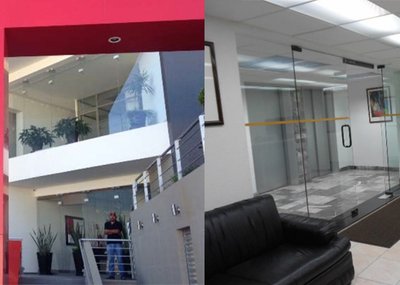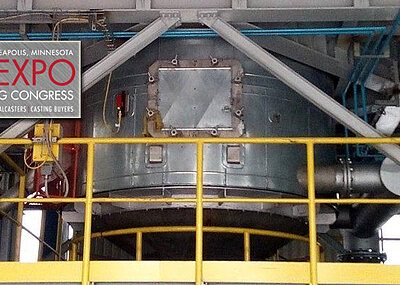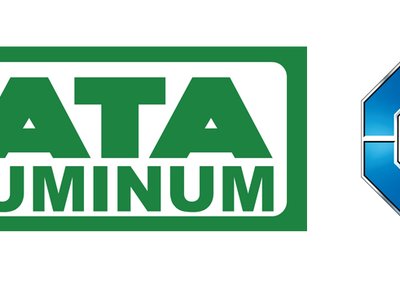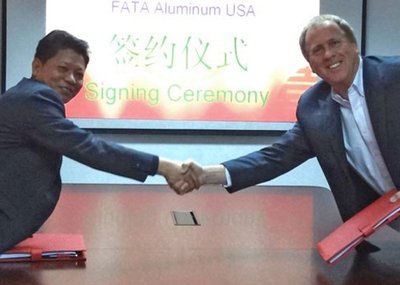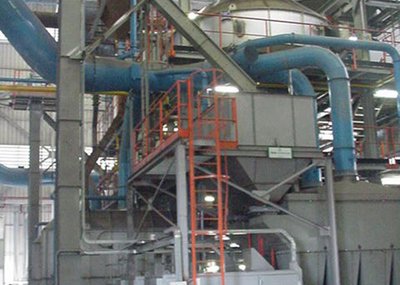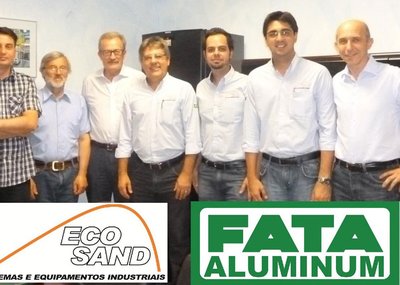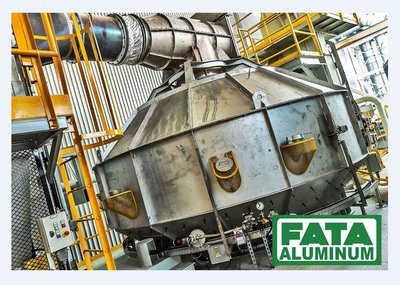Seven months after Marco Meneguzzo was chosen to lead FATA Group, he was given five questions to answer, answers that hopefully would give clues to those key issues defining FATA's future: market sector, technological processes and direction.
Based on your extensive foundry experience (the last seven years with Montupet, a major automotive manufacturer) what is your opinion on the present and future of the foundry marketplace?
After a shaky beginning start, the foundry faces an interesting future, especially because of important cost and weight-reducing technologies and processes that are developing outside of the foundry environment. These pose a challenge to traditional foundry products, principally because today's market is driven by the production of evermore complex parts. We have to keep in mind that the objective of all engineering designers is to obtain solid and uniform part strength.
In the medium to long term, processes such as 3D printing will grow to be an even more imposing foundry opponent. Such competition, hopefully, will stimulate that innovative courage that leads to constant improvement. That will be the only way that the traditional foundry as such can survive.
What do you believe are the most important aspects of technology, processes and human resources?
I don't believe that there will be any immediate earth-shaking technological changes in the foundry. After all, the foundry is a mature production environment where technologies can be adapted to new production parts, and product can migrate from one technology to another. I would point out, however, that all production technologies have their own individual and time-proven applications in their specific fields of use.
Foundry processes must become more eco-friendly while being economically feasible at the same time.
Innovation in this aspect of the foundry will create new opportunities for those able to integrate technological breakthroughs in new as well as in existing production facilities.
We cannot afford to hesitate in implementing new and market-ready technologies to what has shown itself to be a rather hidebound industry.
A great deal remains to be done, and it will be interesting to see how the foundry sector will react to what has been happening in the automotive sector over the last fifteen years. The role played by leading global suppliers will continue to become more and more decisive, as they alone know how to transfer cost-reduction know-how from one customer to the next, and always to the benefit of the global marketplace.
And human resources will continue to be a key element for those wishing to truly excel in today's market. Philosophically, even when an experienced manager is wellversed in his particular manufacturing sector, the capacity to optimize production and innovation by merging both into one process appears to have been lost. It doesn't seem that things will get better in the short term, since human resource investment does not appear to be actively promoted in tomorrow's manufacturing sector. This is especially true in Europe, but in several Asian countries, we find just the opposite tendency: a slow but constantly increasing interest in human resources.
What is your opinion on the "Foundry of the Future" and what relevance will the Industry 4.0 program have?
Industry 4.0 is not just a slogan, but rather a true and unique opportunity to return to manufacturing profitability in Europe where we find our greatest market, the most avant-garde ideas and the best technological know-how: in short, creative abilities higher than any found elsewhere in the manufacturing world. In industrial Asia, synergistic dynamism might be greater at the moment, but this fourth industrial revolution will lead us to overcome what might be called European industrial stagnation which is, in the main, generated by rising personnel costs. Mechatronics, with all of its important innovations and computer technologies, will allow us to drop the overall costs of any manufacturing activity, and the foundry is the perfect technological environment in which these ideas can be implemented. In a foundry, process variables influence productivity, quality and subsequently production costs. Today, these variables are easily quantifiable and therefore containable using the proper management techniques.
I would, however (and I'm not alone in this), put environment and ecosustainability as applied to foundry processing in Europe at the same level of importance. Again, by paying greater attention to each casting application while simultaneously integrating technologies that are already used in other manufacturing processes and which are easily transferable and applicable to the foundry, we can once again make the foundry a much more attractive environment for new investors and young talent. Therefore, the FATA "Foundry of the Future” project brings these conceptual ideas together and applies them with a simplicity characteristic of our approach.
What role do you see this "New FATA Aluminum" playing in this scenario?
Answer - Thanks to our knowledge and attention to technologies, manufacturing processes and innovations, FATA Aluminum is, will be, and will stay a key player in our specific market sector. We were among the first to recognize and incorporate "Foundry 4.0" into our distinct business philosophy and daily production practices, giving us all of the necessary tools to work with and accompany our customers into the future. Having this vision about systems, processes and market future gives us a distinct advantage over all of our competitors.
FATA is continuing to rapidly evolve and adapt to this new environment. My role has been that of a catalyzing factor for a reaction that was already underway, and this new concept is utilized in the analysis and reply to all customer RFQ's.
We want to be our customers' perfect partner in the "Foundry of the Future", and we put ourselves out there as such for every small or large project in which we are involved.
Our continuous research activities confirm that we already have a clear vision for the future, and we are able to put that future within our customer's immediate grasp.
Where and when will FATA Aluminum invest for these future priorities?
To guarantee FATA Aluminum's future "place in the sun", I've quickly begun to implement those changes that would, if only on the basis of its history and corporate name, put the FATA brand in its proper perspective. In the few months I've been here, I've already started to renew the greater part of the FATA Aluminum product line by incorporating appropriate process updates into our products, bringing them from a " currently up-to-date" status to a "state-of the-art" condition, ready to address tomorrow's market requirements but in the present.
We have been repositioning FATA Aluminum at various market levels to attract a wider customer spectrum (high-tech and traditional clients), and our "cost attack" technique, used to reduce costs, is being applied constantly to each and every project quotation with notable results. Knowing emerging markets has helped us to be recognized as a global leader wanting to collaboratively work with local customers.
To strengthen our technical and technologically complete customer service approach (and no matter where these customers might be), we have partnered and signed cooperative agreements with leading global-level companies.
These cooperative agreements give us the necessary "critical mass", total process control and competitiveness required to successfully pursue a global market penetration policy.
We are carefully investing in computer and associated software technologies, and applying that knowledge to new mechatronics in our effort to reach maximum system and process output.
And thanks to the use of "Big Data" and "Cloud Computing" for the statistical analysis and system monitoring of these parameters, we have been able to supply our foundry systems with stable performance, clear preventive maintenance indications, really good efficiency and high quality level - all this with an eye to anticipate and reduce management and production costs.
And thanks to all of the above, some rarely used FATA technologies have become "current news" in as much as they allow us to reach our weight reduction and cost containment goals even when producing highly complex geometrical shapes.
But above all, FATA believes in human capital and resources. In our opinion, the key to future success lies finding the best human resources with extensive foundry sector experience. I pay close and daily attention to competence, training, and employee satisfaction.
Partner
Foundry Corporate News
Topic Automation
Foundry of the Future: Five questions for Marco Meneguzzo, the new General Manager at FATA Aluminum
Lesedauer: min
[10]

